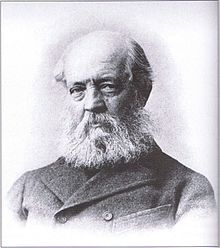Dorchesterway


The Dorchesterway was a Parkway in Boston in the state of Massachusetts of the United States . It was intended as the last part of the Emerald Necklace system of parks and parkways planned by Frederick Law Olmsted in the 19th century , but was never completed.
background
Today's Emerald Necklace has an L-shaped profile. It begins on Boston Common near Downtown Crossing and runs to the Arnold Arboretum , which is in both Forest Hills and Roslindale on the West Roxbury border . From there the Emerald Necklace leads back over the Arborway to Franklin Park .
Olmsted's original plans foresaw that the Emerald Necklace system via the Dorchesterway to the shores of Dorchester Bay in Boston Harbor continue to be a U-shaped form, which in this way a Necklace comes (necklace) also creatively closest. It was also planned to connect Columbia Road in Dorchester and the Strandway in South Boston with the local Marine Park and Pleasure Bay to the Emerald Necklace.
Yet:
“... conditions of Columbia Road when the parks system was being established [...] precluded this vision from becoming a reality. When Columbia Road was formally designed in the late 1800s, there was already a relatively high density of buildings. The road had street rails that were used by a streetcar trolley connecting Uphams Corner and Franklin Park. There was a grass strip in the center and roads on either side, one for commercial traffic and the other for pleasure traffic. As a result, Columbia Road failed to serve the purposes of either the businesses or the pleasure travelers well, and there was not enough room for what Olmsted considered a proper parkway. ”
“... the condition of Columbia Road at the time the parking system was set up prevented this vision from becoming a reality. When Columbia Road was planned in the late 19th century, there was already a relatively high density of buildings. There were rails in the street that connected trams to Uphams Corner and Franklin Park. There was a green strip in the middle and lanes on each side - one for work and the other for leisure traffic. As a result, Columbia Road could not satisfy either side of the user. In addition, there was not enough space for the expansion to a construct under which Olmsted imagined a decent parkway . "
Current situation
The area around the planned Dorchesterway was almost neglected for a century and was urban decay abandoned, but was some over the past decade aesthetic improvements subjected. The Boston Department of Parks and Recreation planted new trees, sowed grass, and planted new planters along part of Columbia Road . Nevertheless, due to the dense development, the greening is still very sparse, which is why the route is not referred to as a parkway. For the same reason, Columbia Road is not an official part of today's Emerald Necklace .
Planning for the future
It is quite conceivable that sometime in the future some kind of Dorchesterway will connect the Emerald Necklace with the coast. Members of the Emerald Necklace Conservancy developed ideas for the long-term development of the Boston park system and suggested using Columbia Road to improve the connections between Franklin Park , Marine Park and Pleasure Bay. It was also discussed to connect to South Boston . According to the association, this is also the wish of many Boston citizens.
In 2004 the Boston Redevelopment Authority published a strategic plan for improvement in Roxbury . In this, the establishment of an MBTA line on Columbia Road is seen as a way to better connect residents to the Emerald Necklace. The planners also recommend a comprehensive redesign of the street with trees and antique street lamps to give Columbia Road the character of a boulevard .
Individual evidence
- ↑ a b c d Columbia Road. In: Heart of the City Project. Harvard University and Northeastern University, archived from the original on April 21, 2008 ; accessed on December 16, 2011 .
- ↑ website. In: Boston Redevelopment Authority. Retrieved December 16, 2011 .
Web links
- Brief mention at City Profile (English)